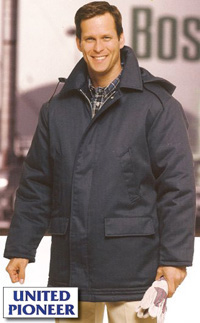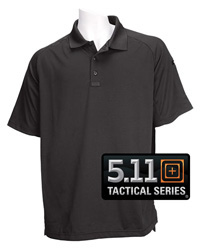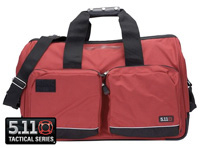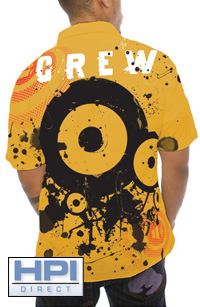|
By Jackie Rosselli It is perhaps the most coveted prize of any company with goods to sell a product that raises customer demand to a frenzy. A hot product will of course boost earnings, but it can also thrust a business to the next level by enhancing its image, building customer relationships and strengthening its reputation within the industry it serves. Marketers believe that much of a product’s success is determined by the initial idea, but from where does the inspiration for these concepts come? What other elements are involved in the creation of a best-selling product? And what are the keys to sustaining a product’s best-selling status? In the consumer market, the answers often lie in technology or must-have gimmickry, as the popularity of Nintendo Wii or Apple’s iPhone clearly illustrates. But success in the uniform industry is decidedly less cutting edge. With few exceptions, there are no such “cool” products; items are primarily designed to fulfill a basic need. This makes functionality the overall determinant behind product success in the uniform industry. A product that consistently performs well has a good chance of being an immediate success, with that success carrying over for years to come. Functionality may explain why so many well-established products continue to be best sellers long after their initial launch. Such is the case of the B340 parka manufactured by United Pioneer. Since its introduction in the 1940s, the jacket has been a hot seller for the Connecticut-based family-owned business even though there are similar products in the marketplace. “It’s really difficult to pinpoint why this one item is so popular,” says United Pioneer’s Michael Braverman. “But what our customers tell us is that the jacket does the job it is supposed to do it keeps you warm.” Prosaic by today’s standards, the 34-inch-long poly/cotton winter parka features a drawstring waist, detachable hood and four pockets for added storage. The outerwear comes in a variety of industrial colors, ensuring that it works as an ensemble with garments from other manufacturers. In the case of the B340, customer feedback indicates that appearance also influences the sale. Widely used in industrial markets, including correctional facilities, transit authorities, EMS and private security, the jacket is regarded as the equivalent in styling and design as those worn by police departments – highly desired traits because of the authoritative image projected. “With this jacket, customers get a professional look at a more modest price point,” notes Braverman. While functionality is integral to this product’s popularity, there may be other explanations at work. Customers often buy more than just a product. They buy what the product and relationship with the selling company will do for them, including how it makes them feel and their perception of what it will be like doing business with a company. The 5.11 Model In many cases, products are propelled to best-selling status by the demands of the marketplace. An increased need for uniforms in the 1940s and an expanding dealer base brought the stock program to the industry. In the 1990s, changes in the nature of police work gave birth to the creation and acceptance of a Class B uniform in everyday law enforcement duties. And today, no discussion of best-selling products would be complete without the phenomenon known as 5.11 Tactical. A trouser manufacturer by tradition, 5.11 Tactical has revolutionized the industry by creating an arsenal of products that are highly desired by police officers and fire fighters across the country. Talk with just about any store owner within the 5.11 network of dealers and he’ll tell you the product line is hot. How did this happen? Like the instances mentioned above, the company clearly capitalized on trends occurring in the consumer market, as well as the tastes of a younger, hipper end-user base. “We’ve brought a retail mindset to a conservative marketplace,” says 5.11 Tactical CEO Dan Costa. The company’s shirt line is one such example. 5.11 was the first to introduce into the law enforcement market a cotton polo shirt that doesn’t fade or wrinkle, giving officers the comfort they desired without compromising professionalism. “The most important ingredient in a best-selling product is function,” notes Costa. “But you must also exceed the needs of the end user and deliver the product at a value, and we do that.” The story behind the creation of another popular item from the shirt line illustrates this point. The company set out to make a performance polo that rivaled the look and success of those sold by Under Armour, the popular sportswear manufacturer. During an initial wear test, 5.11 discovered that the shirt wouldn’t hold up to the demands of a modern police force. “If touched to Velcro, the shirt was destroyed,” notes Costa. Going back to the drawing board, the company developed a durable, anti-pill performance polo made of a proprietary synthetic fabric that doesn’t snag when it encounters keys, duty belts, Velcro or other abrasives. The result? “We’ve been on backorder for a year and a half,” says Costa. Equally important, the shirt is sold at a value. “The same polo costs $60 through Under Amour; we sell ours at $39.” At times, the inspiration for compelling products comes from the end users themselves. Many companies develop customer surveys, using the feedback to fine tune an existing design or create a whole new concept. 5.11 took the process a step further during the development of a new line for fire departments. “We had one of our designers spend a week at a firehouse, observing the day-to-day activities and listening to what firefighters had to say,” says Costa. Those encounters sparked the creation of several new products, including the company’s popular line of turnout bags. “We made a bag that snaps open like a doctor’s bag, which speeds the packing and removal of items, an important consideration for an occupation where every second counts,” says Costa. Noticing that boots would often be muddy, the new bags also include a removable liner. The company was able to innovate broadly and successfully because it engaged the customer as a co-designer of innovation. The customer was an active participant in the process and was involved in steps that guided the products from concept to launch. Not surprisingly, the costs for such product development are high. “I learned long ago that if a customer asks for something you never say no,'” says Costa. “Yes, it’s an expensive way of doing business, but what you get in return is a customer for life.” There are also additional advantages. Having a hot product builds brand equity and provides a crossover benefit to other products. “Love the shirt, buy the bag,” adds Costa. Uniforms vs. Promotional Products Sometimes, a hot product or concept can spark the success of entire apparel programs, as is the case of HPI Direct, a supplier that serves both the uniform and promotional products industries. Headquartered in Georgia, HPI initially started as a kiosk, where founder Kirby Sims sold embroidered hats and screen-printed items to mall customers. Over the past 15 years, the company has evolved into a major industry player, building its reputation through innovative national corporate apparel programs for the likes of Xerox, retail-inspired designs for Radio Shack and custom-themed garments for Universal Studios Resort, as well as countless quick-service eateries and entertainment attractions. Linda Baker, national account manager for HPI, notes that while function, durability and value are key ingredients behind best-selling products in the uniform industry, the promotional products market is governed by a different set of standards. “With promotional products, a best seller is defined by the latest creation at a good price point,” says Baker. “It’s all about innovation. You can buy mugs and pens from any supplier but to catch the customer’s attention, you need a cool new product, something he has never seen before.” Such products are treated as commodities by the buyer, not necessities, as uniforms or other articles of clothing are viewed by wearers. “Uniforms are a branding statement that link image with the overall competency of the wearer and underscore the professionalism of the customer,” adds Baker. It’s an important distinction and may help explain why relationships are so pivotal in creating best-selling uniform products. HPI’s relationship with Universal is a case in point. Baker credits her long experience in the uniform industry and the connections she’s cultivated in it with being able to tap the lucrative theme park business, a market in which HPI was previously unknown. “Customers have to trust you and have confidence in your ability before you get the sale,” she says. It also helps to be able to bring the customer’s concept to life, which sometimes calls for out-of-the-box thinking. “They came to us looking for a shirt that was very difficult to produce, but through sublimation, a process not widely used in the uniform industry, we were able to give them what they wanted.” Such innovation has served the company well, creating winning designs throughout its product line. But so too has its reliance on the proven, tried-and-true items long favored by its customers. One of the company’s top sellers, a fine line twill 65/35 shirt, is used in many programs with great performance in retail, restaurant and airline industries. Past customer satisfaction and experience also played a role in the redesign of the Culver’s program, a quick-service eatery located throughout the Midwest. The 2008 Culver’s program design incorporates a number of uniform items that have previously worked well for the restaurant. For example, while HPI changed the colors of a polo shirt to better reflect those being used throughout Culver’s properties, it kept the fabric the same because it performed well. Little has been said up to this point about the role of price, but the question remains: Does price affect whether a product takes off or goes bust? A primary factor in the promotional products industry, price is less of a consideration when it comes to creating hot uniform products. Because they are worn every day, other elements take prominence, such as functionality, durability and comfort. In the uniform industry, it is value, not price, that ultimately determines a product’s success or demise. For Radio Shack, value was defined as projecting a consistent image that utilized its signature red in the shirting options worn by its sales staff. But it was unable to achieve the look largely because of its use of a Land’s End shirt. Enter HPI, who as a uniform supplier was able to control the shade variation for the company’s wovens, knits and outerwear. And although HPI delivered the product at a substantial savings, price was not the ultimate driver of the sale. “I would say that price doesn’t create a best-selling product; a best seller creates a better price,” says CEO Kirby Sims. “Our fine line twill is an example of this. A proven fabric, we have been able to increase our production and add it to more programs, which has reduced its cost.” Of course, there are times when even the most compelling concepts turn out to be, well, less than compelling. Such was the case with Swift Transportation. According to Baker, the design team walked in to the client with a full-blown presentation only to discover that the truck drivers wanted to wear basic T-shirts with screen print designs. “It was certainly a learning experience, but it’s always good to try to show out-of-the-box ideas,” says Baker. “You never know what ideas will stick and become tomorrow’s best seller.”
|
|
| Above story first appeared in MADE TO MEASURE Magazine, Spring & Summer 2009 issue. All rights reserved. Photos appear by special permission. | |
| Halper Publishing Company 633 Skokie Blvd, #490 Northbrook, IL 60062 (877) 415-3300 Fax (224) 406-8850 [email protected] |
|














